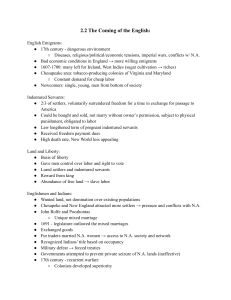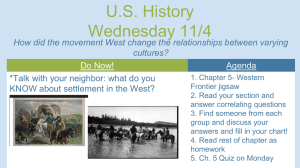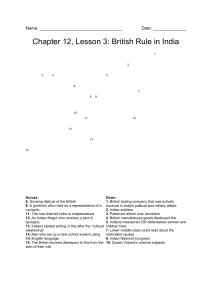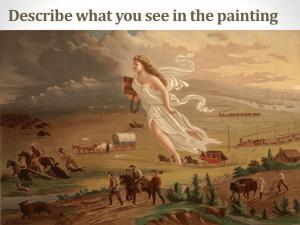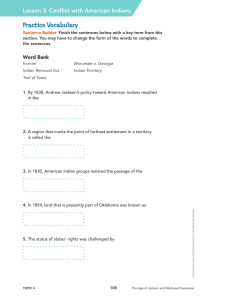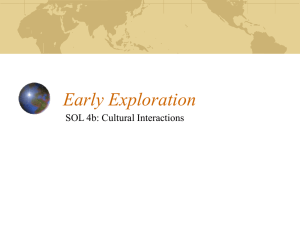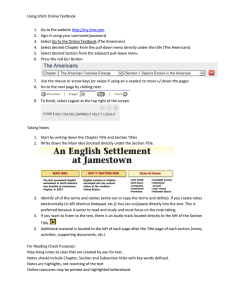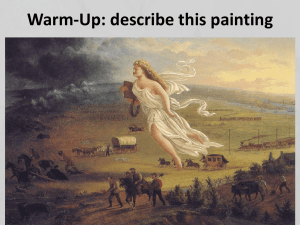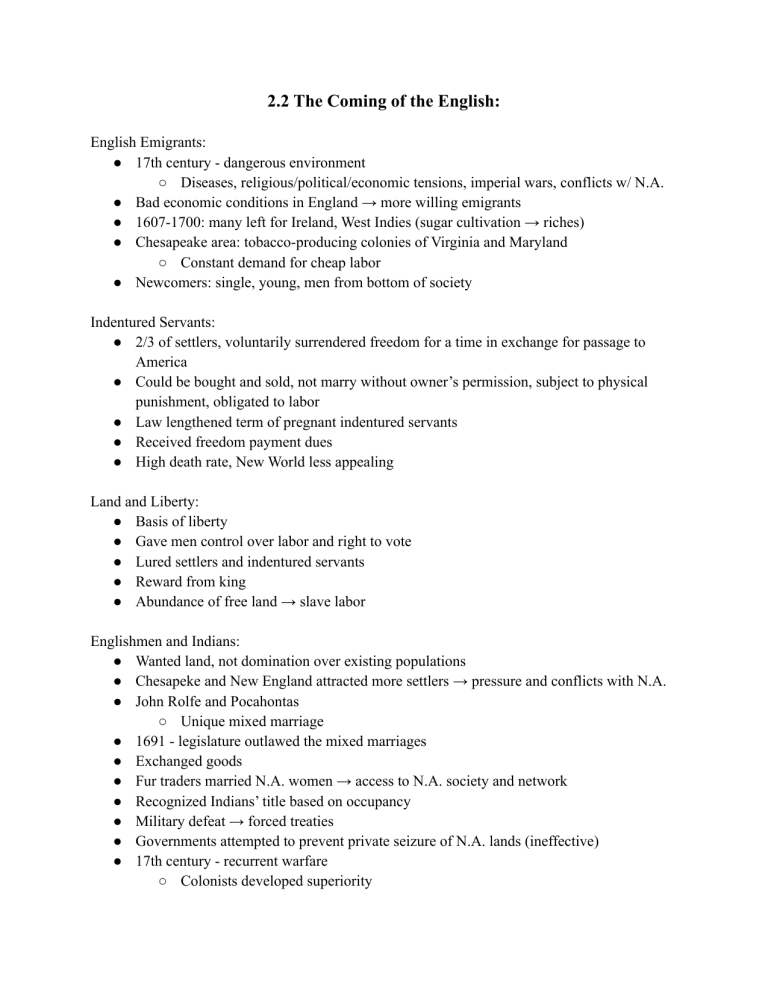
2.2 The Coming of the English: English Emigrants: ● 17th century - dangerous environment ○ Diseases, religious/political/economic tensions, imperial wars, conflicts w/ N.A. ● Bad economic conditions in England → more willing emigrants ● 1607-1700: many left for Ireland, West Indies (sugar cultivation → riches) ● Chesapeake area: tobacco-producing colonies of Virginia and Maryland ○ Constant demand for cheap labor ● Newcomers: single, young, men from bottom of society Indentured Servants: ● 2/3 of settlers, voluntarily surrendered freedom for a time in exchange for passage to America ● Could be bought and sold, not marry without owner’s permission, subject to physical punishment, obligated to labor ● Law lengthened term of pregnant indentured servants ● Received freedom payment dues ● High death rate, New World less appealing Land and Liberty: ● Basis of liberty ● Gave men control over labor and right to vote ● Lured settlers and indentured servants ● Reward from king ● Abundance of free land → slave labor Englishmen and Indians: ● Wanted land, not domination over existing populations ● Chesapeke and New England attracted more settlers → pressure and conflicts with N.A. ● John Rolfe and Pocahontas ○ Unique mixed marriage ● 1691 - legislature outlawed the mixed marriages ● Exchanged goods ● Fur traders married N.A. women → access to N.A. society and network ● Recognized Indians’ title based on occupancy ● Military defeat → forced treaties ● Governments attempted to prevent private seizure of N.A. lands (ineffective) ● 17th century - recurrent warfare ○ Colonists developed superiority ● Planted Indian crops and adopted Indian technologies (snowshoes, canoes) Transformation of Indian Life: ● Used Natives as guides, trading partners, and allies ● Eastern Indians initially welcomed for goods ○ Woven cloth, metal kettles, iron axes, fish hooks, hoes, guns ○ Desired copper ornaments and glass beads for religious ceremonies ● Men devoted time to hunting beaver for fur-trading ● Usage of European goods ↑ > Older skills deteriorated ● Alcohol usage ↑ ● Learned to bargain effectively ○ Exchanged valuable commodities (ex: furs, animal skins) for useless European trinkets ● Profits of trade flowed to European merchants ● Stimulated warfare among Indian tribes ● Overhunting of beaver and deer → encroach on other land ● Epidemics decimated populations Changes in the Land: ● Settlers fenced in more land and introduced more crops ● Free-roaming pigs and cattle threatened Native crops ● Demand for wood → depletion of forests Indians relied on for hunting ● Fur trade expansion → diminished beaver populations
